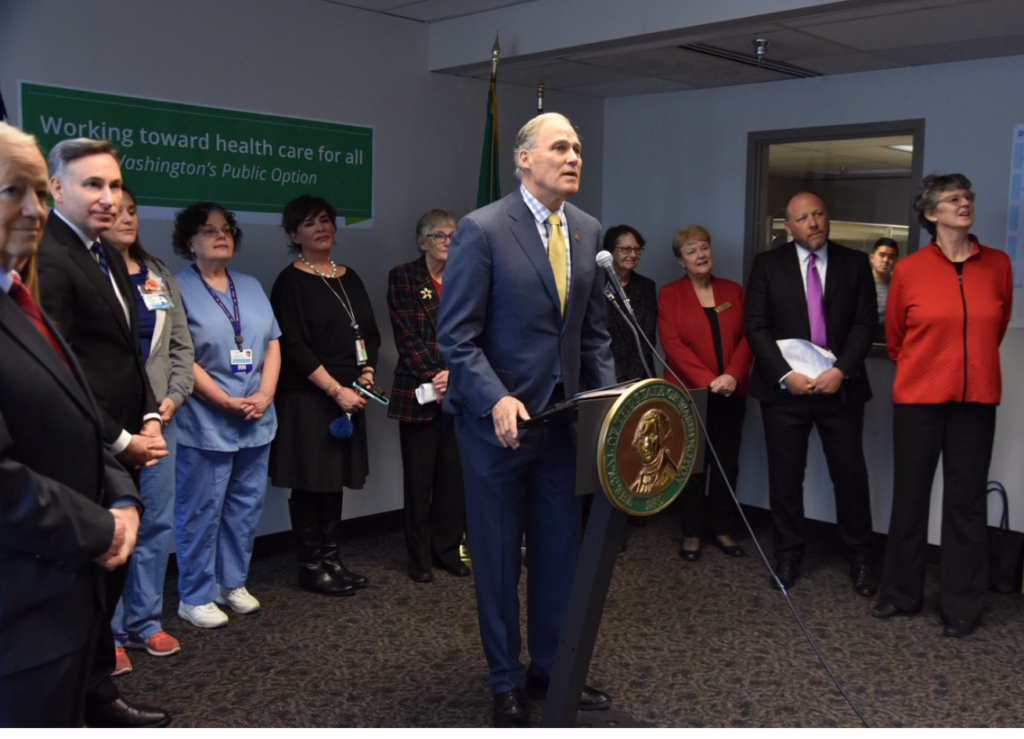
Gov. Jay Inslee announced today that he and Democratic lawmakers will introduce legislation that would provide a public health care option in Washington through the state’s Health Benefit Exchange.
Inslee was joined by Sen. David Frockt, Rep. Eileen Cody, Insurance Commissioner Mike Kreidler and King County Executive Dow Constantine. He made the announcement at King County Public Health Center in Seattle, saying Washington has always been a leader in health care.
How will Washington’s Public Option work?
Every county will have access to a plan that the state will contract for through the Exchange
The Health Care Authority will contract with one or more health carriers to offer qualified health plans on the Exchange. Beginning in 2021, all carriers offering plans inside the Exchange must offer a standard plan at any tier in which they offer at least one plan. Non-standard plans may be offered on the exchange through 2024. Beginning in 2025 only standard plans will be offered on the Exchange.
The public option plans will be standardized to increase consistency of benefits and transparency in costs
Standard plans will have consistent and transparent deductibles, co-pays, and co-insurance, and offer the same services before the deductible. Instead of coverage through plans with various deductibles and cost sharing arrangements, these plans will compete on premium price, provider networks, customer service, and quality. Consumers will benefit by lower deductibles, improved access to pre-deductibles, evidenced-based services across insurers, and access to transparent, predictable cost-sharing.
The public option will help bring down health care costs for patients
The new public option will offer high quality plans consistent with best practices such as the state Health Technology Assessment Program and Medicaid value-based purchasing to ensure lower costs won’t result in lower quality.
Provider reimbursement rates will be capped at Medicare rates, and include cost saving tools such as Health Technology Assessment Program recommendations and Medicaid value based purchasing.
Patients will spend no more than 10 percent of their income on premiums
The Health Benefit Exchange, in consultation with the Health Care Authority, must develop a plan to implement and fund premium subsidies for families and individuals on the Exchange who need financial assistance. The goal is to have consumers spend no more than 10 percent of their income on premiums.


